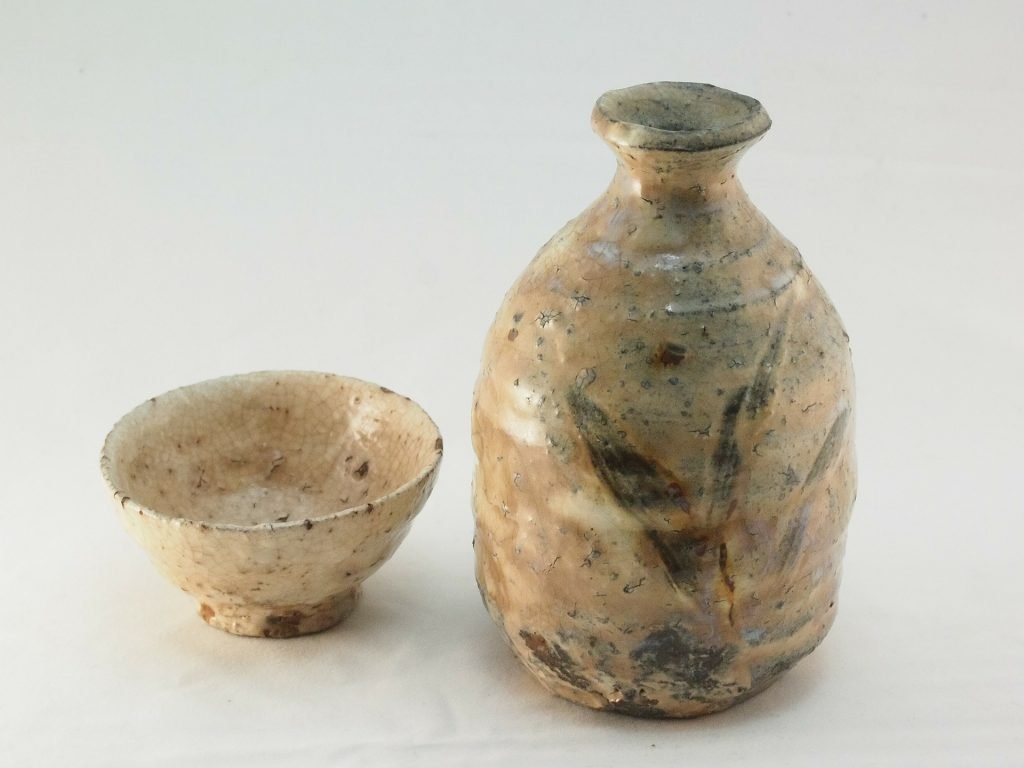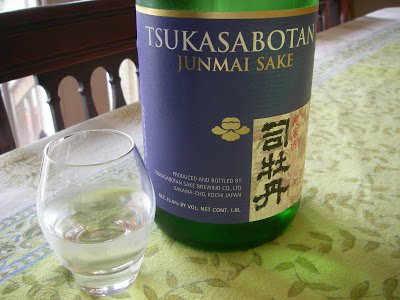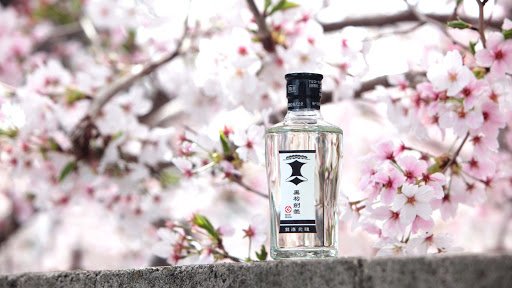
5 Sake Food Pairing Tips from Sake Social’s Founder Marc Smookler

Simply put: sake is rice and water that has been fermented into an alcoholic beverage. Although sake drinks far more like wine, sake shares a similar brewing process to that of beer. – sakesocial.com
Sake is not a predominant spirit one finds in most liquor cabinets or on a typical cocktail menu. If you’re not dining at a Japanese restaurant, it is probably not something one would think to order. Why isn’t this artisan beverage more readily available and top of mind? For me, it is a lack of knowledge that has steered me away from sake. A few years ago a client of mine gifted me a beautiful ceramic sake set, which includes the Tokkuri Bottle and four cups. It is displayed on a shelf in my curio cabinet, along with my Royal Doulton figurine and my grandmother’s bone china tea cups. The set has never seen a drop of sake…until now.
Although the demand for sake has grown in America over the years (the U.S. is now Japan’s largest sake export market), there is still quite a bit of mystery and intrigue surrounding the spirit. For the most part, when Americans think of sake they instinctively think to pair it with Japanese dishes, and particularly sushi. However, sake is a complex and diverse spirit that pairs quite well with a surprising variety of food!
When I’m interested in learning more about a subject, I like to get right to it and go to an expert. Marc Smookler, the founder of sakesocial.com, is just that. A man who has spent a good portion of his existence, understanding the essence of sake, and sharing it with the world.
The word for sake in Japan is Nihonshu or “wine of Japan.”
Sake 101
To understand sake is to love sake. Just like wine, beer or a spirit like tequila, there is a provenance that accompanies it. With such an incredible variety of sake to choose from, how does one get started? I sat down with sake expert Marc Smookler and he was kind enough to share with our readers his tips for sake newbies and some simple food pairings that are quite amazing. His exclusive Luxe Beat interview is below and his food pairings follow.
Brewers have been making sake in its current form for roughly 1,000 years, and today there are over 1,400 breweries producing anywhere between 15-25 product offerings each.
Sherrie: How do you describe sake to a neophyte?
Marc: It’s like wine but made from rice instead of grapes and when sipped cold can even taste better than many wines–in my opinion. I also think sake does a much better job of clearing a palate if sipping or pairing with food.
S: What is the biggest misconception people have about sake?
M: That it has a higher amount of alcohol than wine. And second, that it’s best to drink most brews cold.
S: What elements do you look for in a good quality sake?
M: I am a fan of the saying “less is more” so, no additives–which most sakes don’t have. Also, as is true with most people, the higher the grade/quality of sake, the more clean or clear it tastes to me. And when we refer to “grade” we refer to the amount of rice that is used to make the brew (i.e. how much is “milled” away before brewing).
S: Are there any little-known facts about sake you can share?
M: Sake is brewed like beer.
S: Do you have a personal favorite sake?
M: I do. My two current favorites are Kirinzan and Kakurei.
S: What do you drink other than sake?
M: I am not a fan of hard alcohol, but I do enjoy beer. Beer and sake are definitely my drinks of choice.
S: Do you have a personal favorite sake and food pairing?
M: Mac and cheese with sake!!!
S: What would you say is the most used feature on your website?
M: Our section on Sake 101. Also, we have some great articles on how to serve hot or warm sake.
S: What difficulties did you encounter when beginning to sell sake online?
M: The liquor licensing and understanding how to sell and ship alcohol across state lines. (He’s got it figured out!)
S: What does the landscape for sake look like in the US?
M: Growing but still nascent.
S: How do you define luxury?
M: Wow. Great question. Luxury is typically defined as something wanted but not needed. An indulgence. For me though, it goes much deeper than possession. Luxury has always seemed more expansive to me. For instance, something can “taste” “look” or “feel” luxurious by its richness or “depth”. Luxury can also mean how well something is made yet not necessarily cost a lot. It’s craftsmanship. And lastly, for someone with two young kids and a cadre of animals (pets), luxury can also mean time with either of them (or alone).
S: What book is on your bedside table?
M: Well I don’t have a book at my bedside but I do have Kindle and Audible on multiple devices that I use on a daily basis. The book I am currently listening to while I put my son to bed at night is Snow Crash by Neal Stephenson.
Sake and Food Pairing Tips:
Pizza
I highly recommend the Wakatake Onikoroshi “Demon Slayer” for pizza. It’s a medium priced brew that carries a good initial punch to clear the palate from a slice of pizza. This Junmai Ginjo resembles a semi-dry, red wine with tastes of subtle green apple and mineral flavors that make it a perfect match for Italian flavors.
Tex-Mex
For Tex-Mex, the Sawanoi Kioke Jikomi Iroha “Fountain of Tokyo” is a great choice. This traditional old method sake is fermented in a cedar tank, which gives it a gentle nose made up of dry cedar, celery, and pepper—a perfect taste profile to compliment a Tex-Mex menu. This is a tremendously elegant sake with tons of character but in a very mild presentation, so it doesn’t compete too much with the rich, robust flavors found in Tex-Mex.
Barbecue
If you’re having barbecue, try the Tsukasabotan “Karakuchi”. This well-built and solid Junmai is medium-bodied and drinks similarly to a clean white wine or light beer, like a hefeweizen. There are subtle blueberry and other fruit flavors that drink more rich than sweet and complement savory, smoky flavors nicely. How’s that for a pairing of your fresh meats and veggies hot off the grill?
Pasta
Pasta works well with Kenbishi Mizuho Kuromatsu. The nose on this brew is an array of rich and earthy tones highlighted by raisins and sweet nuts. Similar to a Bordeaux, this sake puts forth a briskness that is rounded out when served closer to room temperature. Whether you’re serving pasta in a rich creamy sauce or a delicate marinara with basil, this brew will both cleanse the palate and complement the dish.
Shellfish
A great option for Shellfish is Yumeakari. The nose on this crisp Junmai Ginjo is a unique grouping of citrus aromas like, lemon and grapefruit with a hint of lemon grass. Those sake drinkers looking for a light, clean and gentle brew that has a quick finish look no further. “Kire” is Japanese for a quick and cutting finish and this sake does not disappoint. The fun side of the sake is that there is a “Lemonhead” candy quality to it, which is pretty unique in the sake world and makes this brew a great match for the brininess of shellfish like lobster, crab and shrimp.
Thank you to Marc for sharing his tips and food pairings. To learn more about sake visit sakesocial.com.
More About Marc:
Austin-based entrepreneur Marc Smookler has founded six companies, three of which are current market leaders in their respective spaces: a commercial real estate data platform, a successful online retailer, and a cutting-edge marketing service platform.
His largest success to date is Fonality—a cloud and open-source based PBX competitor to Avaya and Cisco that was acquired by NetFortis in 2017. Smookler also founded SakeSocial.com, the largest online retailer and highest-ranking online destination for all things related to Japanese sake. His most recent project, IdealSpot, helps everyone in the commercial real estate and retail ecosystems better understand local markets and communities through the use of better data. Smookler is also a partner and mentor at Austin’s top tech incubators, Capital Factory and TechStars, and serves as a board member and trusted advisor for several companies in the B2SMB and B2C spaces.
Smookler graduated with a degree in corporate finance from the University of Minnesota’s Carlson School of Management and worked in banking and finance for several years before becoming the “webpreneur” he is today. When he’s not busy running his companies and mentoring Austin’s next generation of entrepreneurs, he likes spending time with his wife, son and their standard poodle, playing PC games and, of course, discovering new bottles of sake.
Please drink responsibly.
















![Newfoundland’s Chef Chris Chafe [INTERVIEW]](https://luxebeatmag.com/wp-content/uploads/2014/09/athenbig.jpg)






















